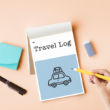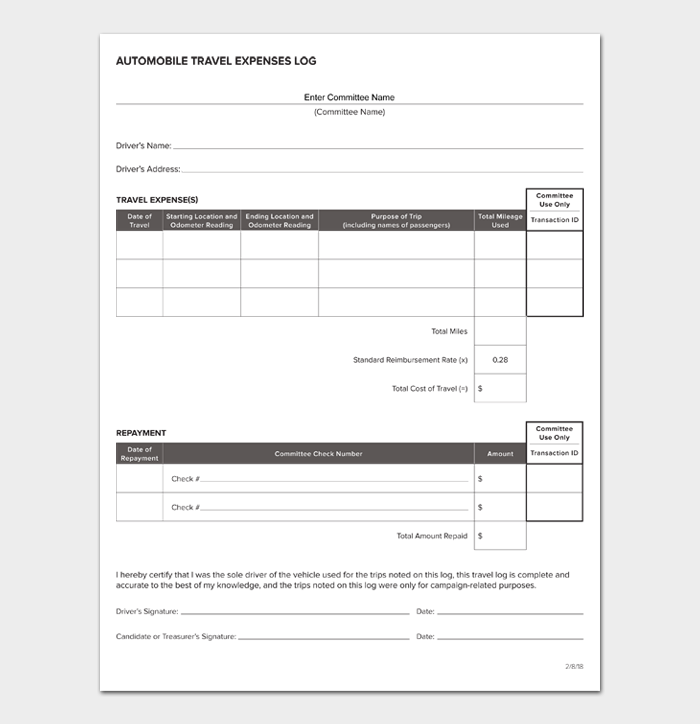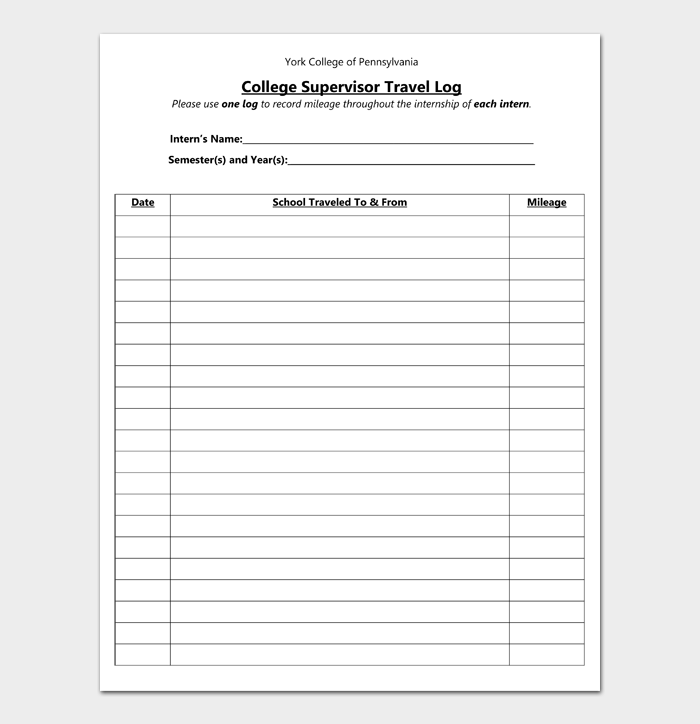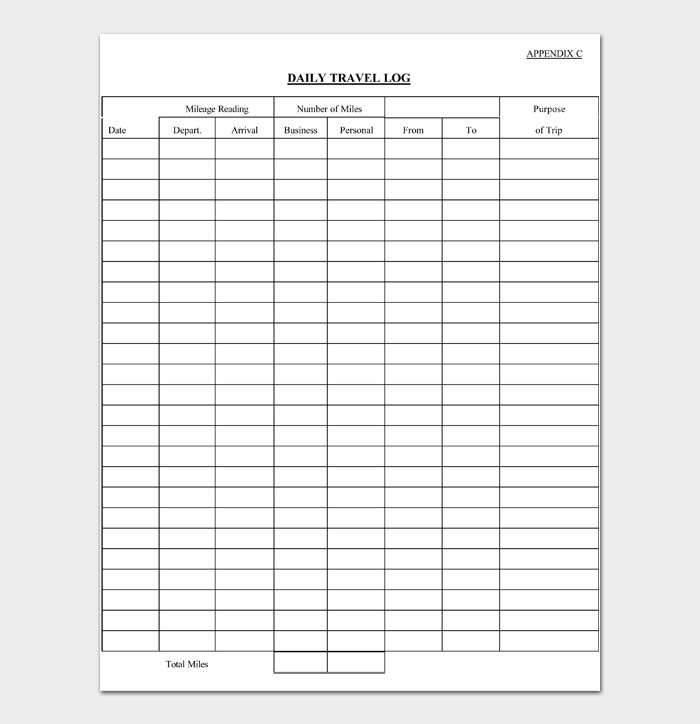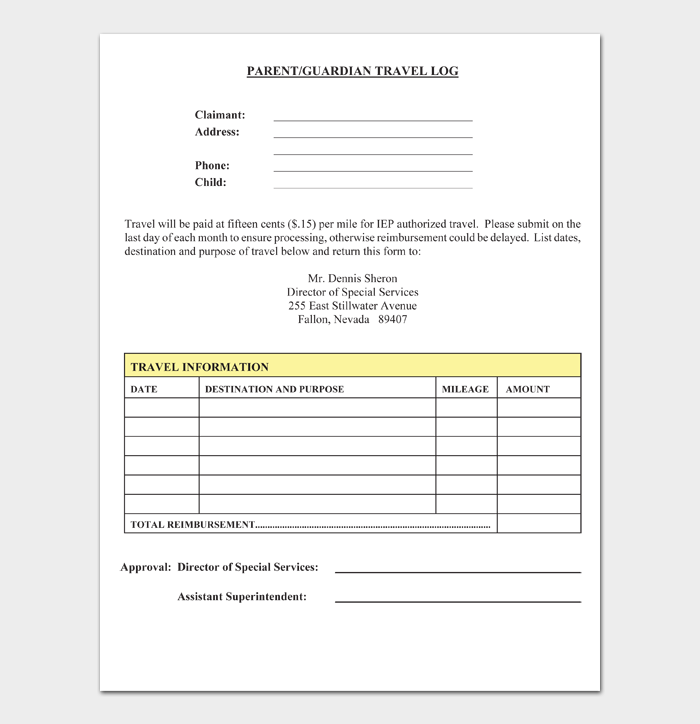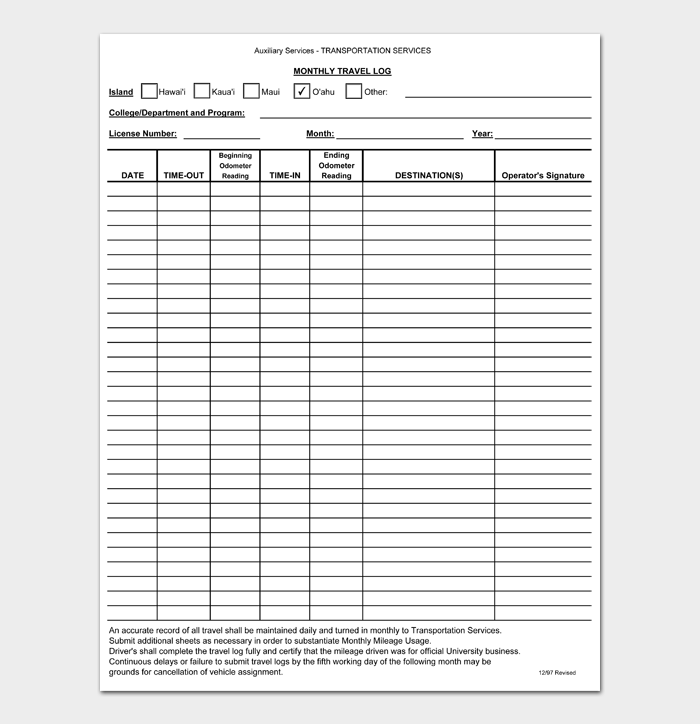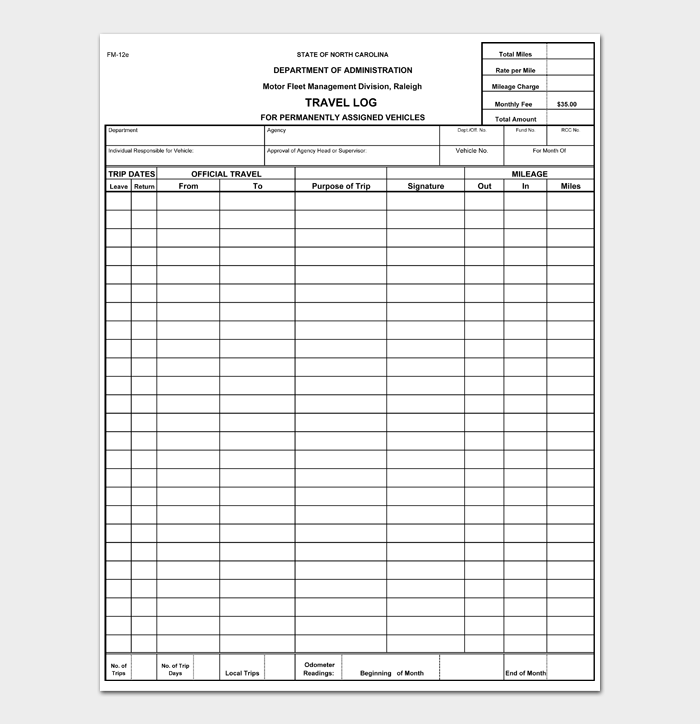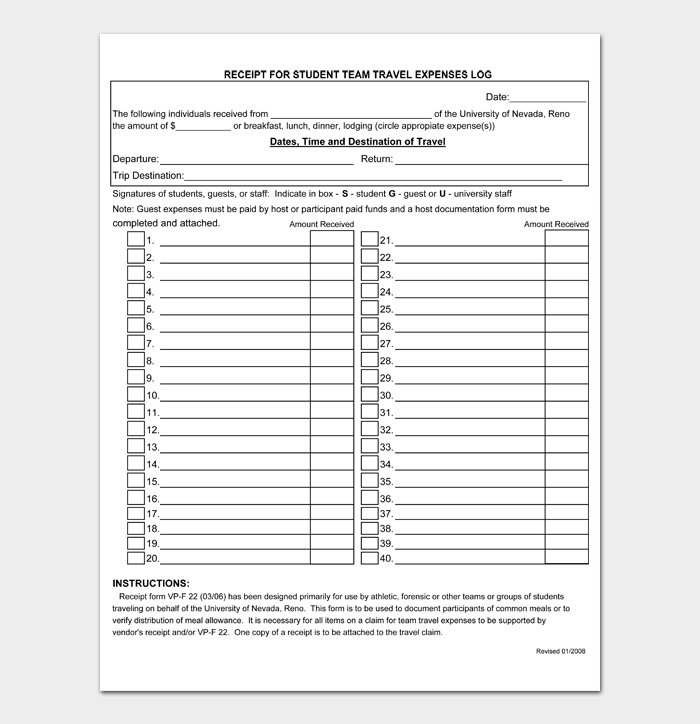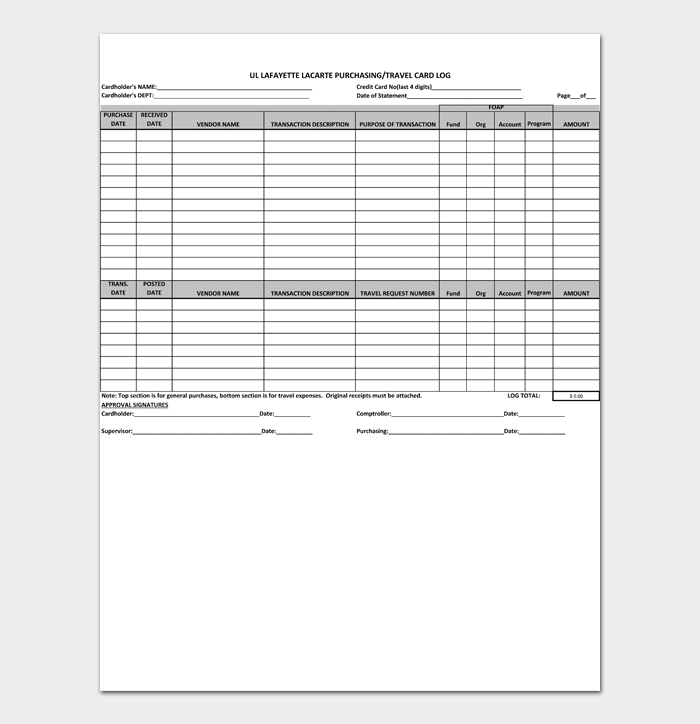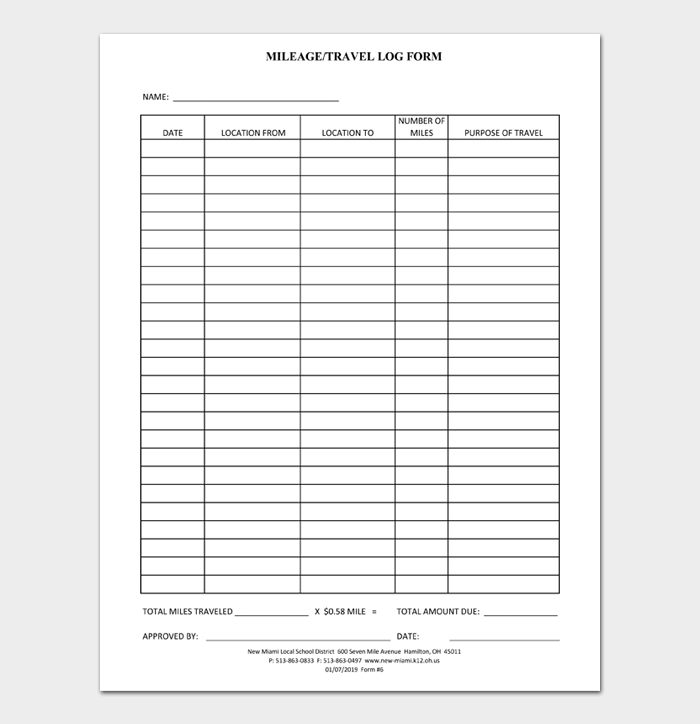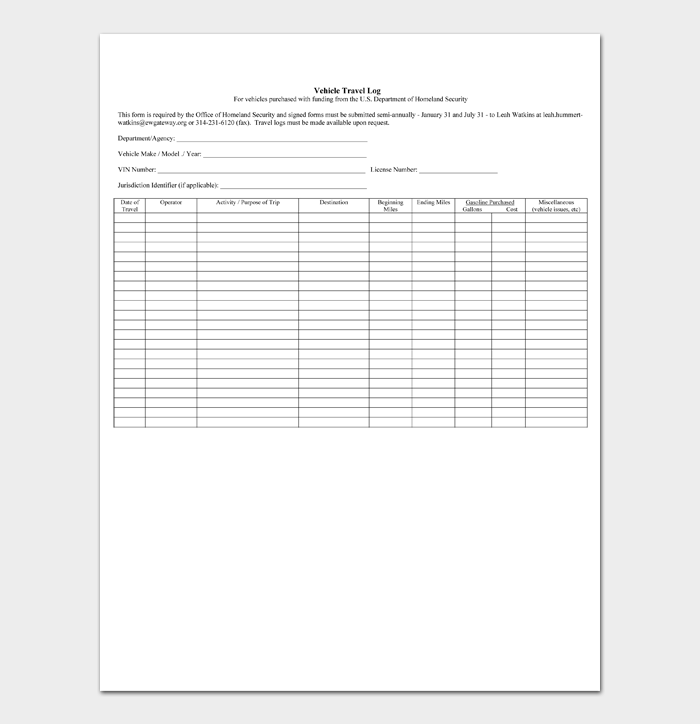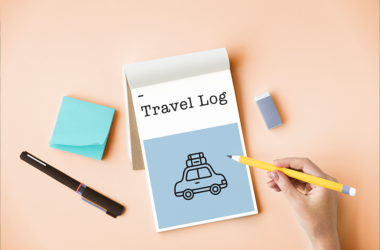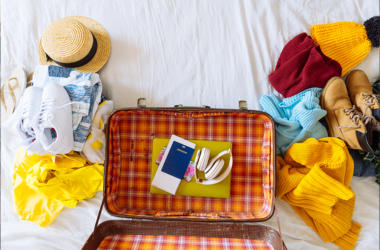As the holiday season approaches, you may find yourself eagerly planning a getaway to that dream destination you’ve always longed to explore. Enhance your travel experience by utilizing a travel log, a versatile tool designed to help you organize and plan your journey, while also providing a space to record memorable moments, new knowledge, and interesting encounters.
Often referred to as a vacation journal, travel logs offer value for both short and long trips alike. Contrary to popular belief, you don’t need to embark on an epic voyage to benefit from a travel journal; even a brief excursion just an hour from home can yield memorable experiences worth documenting. Moreover, travel logs are not solely for personal use, as numerous companies and individuals maintain professional travel records for various purposes.
Dive deeper into the world of travel logs as we guide you through selecting the perfect journal, exploring diverse writing prompts, and offering tips on preserving your travel memories for years to come.
What Is a Travel Log?
A travel log is a record of your travels that can take many different forms. It can be a physical notebook or journal, a digital document or blog, or even a collection of photos and videos. At its core, a travel log is a way to organize and plan your trip, document your experiences, and capture the memories that you make along the way.
Some people use their travel logs to keep track of their itinerary, jot down notes about places they want to visit or things they want to do, and store important travel documents like passports and tickets. Others use their travel logs as a way to reflect on their experiences, write about what they learned, and share their stories with others.
While travel logs were originally used by travelers to record their experiences for personal reasons, they are now used by many companies and individuals for professional purposes as well. Travel agents, tour operators, and travel bloggers often keep detailed travel logs to document their trips and share their experiences with their clients or readers. Companies may also use travel logs to track employee travel expenses and ensure that their travel policies are being followed.
Why use a Travel Log?
Each person likes going on a trip because it gives you an adventure that you will leave to remember. There are five reasons for using a travel log. These reasons include:
Memories
In most cases, you are likely to take many photos during your trip, some of which you can add to your travel journal. Therefore, use your phone to take numerous pictures and carry alongside your phone an HP Sprocket, which is a portable printer. This machine might be smaller than your phone. And it prints wireless from whichever phone you are using.
Many individuals prefer it over other printers because it is lightweight and offers you ink-free prints with the entire stickers backed to print and stick them straight away to your journal. This means you do not need tapes or glue to add photos to the travel journal. You can also add stamps, stickers, flowers, pressed plants or flowers, business cards, receipts, or ticket stubs to keep treasured memories. In addition, you can add other few mementos you are likely to find during your trip.
Reflection
Many people love the travel log book because they can find time to go through their notes after the trip. Thus, when you revisit your travel journal, you can confidently recap how much your trip varied from the expectations you had jotted down earlier. During this time, you can state what you enjoyed, what you would love to do once more, and what you would love to alter. You can use this as your travel guide on your next trip or even a travel guide for others going for a vocation.
Mindfulness
A travel log helps you to be mindful and focus on your trip. It makes you take a break from your phone and focus on your conversation on your trip. This means you will be mindful of things you do, smell, taste, touch, hear and see while on your trip. These things might look simple, but you must note them to recount them later, especially after your trip. Never wait until you end your trip to make your notes. Take the initiative of making notes each day that passes to avoid missing out on crucial matters. Remember, the little things you are likely to assume are what make your entire trip exciting.
Anticipation
The notes you make in your travel log will leave you anticipating more details. On the other hand, you can even start anticipating before your trip since you will be asking yourself a lot of queries, such as what you expect to do, eat and see, and people’s culture being different from your culture when you record all these questions down. You can answer them later and compare them as you find answers after your trip.
Planning
Travel journals are used when you are on vacation. You can use them to establish a travel places wish list, or bucket list, alongside the things you would love to see. After choosing your destination, it is appropriate that you use your travel log to plan for your trip effectively, including details like what you would like to do, see, your trip cost, how you are likely to reach there, and where you will stay. Do not forget to include your expectations as well as the packing list. Most people find planning difficult, not knowing; they can change that conception using the travel journal. Below are a few ways you can use the travel log while planning for your vacation:
- Packing list- Nothing is complicated like packing for a place you are going for the first time. But you can commence by examining the weather and choosing your outfits accordingly. Do not just focus on clothes but everything you will need on your trips, such as feminine hygiene, medicine, electric adaptors, and phone chargers. Ensure you add them to the list.
- Travel prep list- You must jot down what needs to be cared for when you are away, which will help you not forget anything. This list includes child and pet care, plant care, a house sitter, and stopping the mail. These are things you must take of before leaving.
- Things to buy- Whenever you arrange for a trip. You might need to purchase several items like a travel-sized lotion, luggage id tag, cosmetic case, and a new suitcase. Ensure that the list of these things is in your travel journal.
- Travel itinerary- With the travel log, you will plan and fulfill everything as you have planned in it. It acts as a command center. Therefore, make sure that you stick to the plans you make on your travel journal, and you will not worry about anything on your trip.
- Hotel reservations and travel plan- The travel log will assist you in keeping track of your entire hotel reservations, car rental, and all flights, among other travel plans you need to make in advance. Write down contact numbers, addresses, confirmation numbers, and flight numbers. Suppose your trip will not be within your country. Ensure you keep your contact info and passport number for your local embassy in your journal.
- Saving budget- After some thorough research about your trip, you need to know how much the trip will cost you. You can achieve this by writing down the entire cost of everything, including items you need to purchase before your trip, transportation, meal budget, and hotel rates, among many more things.
- Things to see- It is excellent to write what you would love to see during your trip. You must be sure of open hours and if reservations need to be done earlier plus the total cost.
- Travel research- After choosing a place for your vacation, you need thorough research and write whatever you discover in your journal. It might be about the weather, what they produce, a figure of individuals visiting the area. And if this area is known.
- Bucket list- Use your travel list to write down some of the places you would love to visit in the future.
Essential Elements of a Travel Log
By now, you probably understand a travel blog, but do you know its essential elements? Below are several elements of a travel log:
- Business cards
- Food labels
- Postage stamps
- Maps
- Capital and exchange rates
- Memories
- Pressed flowers and leaves
- Postcards
- Tickets
- Sketches and doodles
- Photos
- Place to visit
- Travel itinerary
- Packing list
- Expectations
- Planning
After your vacation, you can comfortably enjoy reading through your notes and going through everything you collected during your journey.
Travel Log Templates & Examples
Navigating the Journey: Overcoming Challenges and Limitations of Travel Logs
While travel logs offer numerous benefits for personal and professional use, maintaining a consistent and effective journal comes with its own set of challenges and limitations. In this section, we will explore the potential obstacles travelers may encounter when keeping a travel log and suggest ways to overcome them.
- Time constraints: Busy travel schedules can make it difficult to carve out the time needed for regular journaling. To combat this issue, consider setting aside a specific time each day, even if it’s just a few minutes, to jot down your experiences and observations. Alternatively, try voice recording your thoughts and transcribing them later when you have more time.
- Lack of inspiration: It’s not uncommon to experience writer’s block or feel unsure about what to include in your travel log. Overcome this by using prompts, taking photographs, or sketching scenes as a starting point for your entries. Remember that there’s no right or wrong way to document your journey – focus on capturing the moments that resonate with you.
- Privacy concerns: Protecting the sensitive information in your travel log is crucial, especially for business travelers who may need to record confidential details. Ensure your log’s security by using password protection for digital journals or locks for physical ones. Additionally, be cautious when sharing your travel log with others to prevent unauthorized access to your private information.
- Consistency: Staying consistent with journaling throughout your trip can be challenging, especially when dealing with factors such as jet lag or travel fatigue. To maintain momentum, consider setting reminders or alarms to prompt you to update your log. You can also try breaking your journaling sessions into smaller, manageable increments to make the task less daunting.
- Organization: Keeping your travel log organized is essential for easy reference and navigation. However, this can be challenging when dealing with a wide range of content, such as photographs, sketches, and written entries. To maintain organization, establish a system for sorting your entries, whether it’s through color-coding, indexing, or dividing your log into sections based on your itinerary.
- Preservation: Ensuring the longevity of your travel log can be challenging, particularly for physical journals that may be exposed to the elements, wear and tear, or damage. Invest in a durable, high-quality journal and use acid-free paper and pens to help preserve your memories. For digital journals, regularly back up your content to secure cloud storage or external drives.
Mastering the Art of Travel Logging for Personal and Professional Adventures
A travel log can serve as an invaluable tool for documenting and organizing your adventures, whether you’re traveling for leisure or conducting business. By following these tips, you can ensure that your travel log becomes an indispensable companion on your journey.
- Choose the right format: Consider your preferences and needs when selecting a travel log. Options range from traditional paper journals and sketchbooks to digital apps and platforms. A physical journal is ideal for those who enjoy handwriting, while a digital log may be better suited for tech-savvy travelers or those seeking convenient access to their records.
- Establish a routine: Set aside a dedicated time each day or week to update your travel log. Consistency is key in capturing your experiences and observations in a timely manner. Establishing a routine can help you to stay disciplined and make journaling an enjoyable habit.
- Include pertinent details: For both personal and business travel, be sure to record essential information such as dates, locations, expenses, and contact details. This will help you keep track of your journey and make it easier to reference specific events or encounters later.
- Embrace personalization: Customize your travel log to reflect your unique experiences and preferences. You can include sketches, photographs, ticket stubs, or any other memorabilia that captures the essence of your journey. Feel free to experiment with different writing styles, whether it’s prose, poetry, or bullet points.
- Incorporate reflections: Use your travel log as an opportunity to reflect on your experiences. Consider jotting down your thoughts, feelings, and insights gained during your trip. For business travelers, this could involve evaluating the success of meetings, networking events, or conferences.
- Organize your content: To make your travel log easy to navigate, create a system for organizing your entries. This can be as simple as dividing your log into sections based on your trip’s itinerary or using color-coded tabs to differentiate between personal and business content.
- Ensure privacy and security: Protect the sensitive information in your travel log by keeping it in a secure location. For physical journals, consider using a lock or storing them in a safe place. For digital logs, use password protection and secure cloud storage services.
- Review and share: Periodically review your travel log to relive memories, gain insights, and learn from your experiences. If you feel comfortable, consider sharing your travel stories with friends, family, or colleagues. This can foster connection, inspire others, and potentially lead to new opportunities.
Case Studies and Examples: Travel Logs in Action
To better understand the impact and value of travel logs, let’s explore some case studies and examples that showcase their effectiveness and versatility in various contexts.
Case Study 1: Personal Growth through Solo Travel
Samantha, a graphic designer from New York, decided to embark on a solo trip across Europe for six months. As a creative professional, she chose to keep a travel log, which included not only her written experiences but also sketches, watercolor paintings, and photographs. Throughout her journey, Samantha found that her travel log served as an outlet for self-expression and a source of inspiration for her work. Upon returning home, Samantha transformed her travel log into a successful art exhibition, showcasing her personal growth and artistic development through her European adventure.
Case Study 2: Strengthening Family Bonds
The Johnson family, avid travelers from California, took a year-long sabbatical to travel around the world. To document their experiences, each family member maintained a personal travel log. In addition to recording their individual observations and reflections, they also set aside a weekly family meeting to share their favorite entries. By doing so, the Johnsons found that their travel logs facilitated deeper connections and understanding among family members, fostering stronger bonds and lasting memories.
Case Study 3: Enhancing Business Travel
David, a sales executive from London, frequently traveled for work to attend conferences, trade shows, and client meetings. He began using a travel log to keep track of his professional experiences, contacts, and insights gained during his trips. Over time, David found that his travel log helped him stay organized, follow up on leads more effectively, and develop new strategies for his company. By sharing his travel log with colleagues, David’s insights also contributed to the company’s overall growth and success in expanding into new markets.
Example 4: A Travel Blogger’s Journey
Sophia, a travel blogger from Australia, utilized her travel log as a source of inspiration for her blog. By documenting her experiences, thoughts, and emotions in her log, she was able to create engaging and authentic content for her audience. Additionally, her travel log served as a valuable reference when writing detailed guides, reviews, and recommendations for her readers. As a result, Sophia’s travel blog gained a significant following and became a trusted resource for fellow travelers.
These case studies and examples demonstrate the diverse applications and benefits of travel logs, ranging from personal growth and family connections to professional development and creative inspiration. By incorporating a travel log into your journey, you too can unlock the potential of this versatile tool to enrich your travel experiences.
A Brief History of Travel Logs: Tracing the Evolution of Travel Narratives
The history of travel logs spans millennia, taking various forms and adapting to different eras and cultural contexts. From the ancient travel tales found in the Epic of Gilgamesh and the Odyssey to the modern travel blogs and vlogs that populate the internet, travel logs have always been a powerful medium for sharing experiences, insights, and knowledge. This section of the article delves into the evolution of travel logs over time, exploring their transformation from ancient writings and pilgrimage accounts to the digital narratives of the present day.
Ancient Travel Writings
- Earliest records dating back to the 2nd millennium BCE
- The Epic of Gilgamesh and the Odyssey as examples of early travel tales
- Egyptian, Greek, and Roman explorers documented their journeys
The Rise of Pilgrimage Accounts
- Christian, Islamic, and Buddhist pilgrimages during the Middle Ages
- Prominent examples: Egeria’s Travels, The Journey of Benjamin of Tudela, and Xuanzang’s Great Tang Records on the Western Regions
Age of Exploration and Navigation
- 15th to 17th centuries marked by European voyages and discoveries
- Key figures: Marco Polo, Christopher Columbus, and Ferdinand Magellan
- Detailed travel logs and navigational charts became invaluable tools
The Grand Tour and the Birth of Modern Travel Writing
- 17th to 18th centuries saw wealthy European youths embarking on cultural tours
- Focused on art, architecture, and historical sites
- Pioneers of modern travel writing: Richard Lassels, Thomas Coryate, and Tobias Smollett
Romanticism and Exoticism in Travel Writing
- 18th and 19th centuries witnessed a surge in travel narratives focused on the exotic
- Famous works: Robert Louis Stevenson’s Travels with a Donkey in the Cévennes, Charles Darwin’s The Voyage of the Beagle, and Mark Twain’s The Innocents Abroad
Emergence of Travel Journalism
- Late 19th to early 20th centuries saw the growth of newspapers and magazines
- Travel articles became a popular genre, appealing to a broad audience
- Notable travel journalists: Nellie Bly, Ernest Hemingway, and Evelyn Waugh
Post-War Travel Literature Boom
- Post-World War II era marked by increased mobility and leisure time
- Travel writing flourished, focusing on both popular destinations and remote locations
- Leading figures: Bruce Chatwin, Paul Theroux, and Pico Iyer
Advent of Digital Travel Logs
- Late 20th and early 21st centuries revolutionized by the internet and digital media
- Travel blogs, vlogs, and social media platforms democratized travel writing
- Prominent travel bloggers and vloggers: Nomadic Matt, The Blonde Abroad, and FunForLouis
The Future of Travel Logs
- Increased focus on sustainability, cultural sensitivity, and responsible travel
- Emphasis on immersive experiences and hyperlocal insights
- Continued evolution with new technologies, such as virtual reality and augmented reality, enhancing travel narratives
Final Thoughts
Suppose you plan for a vacation during the holidays, ensure your grab a travel journal and make your trip outstanding. Furthermore, excellent travel logs entail travel journals for kids, RV- ing and camping, and general travel. If you are a fan of Erin Condren’s planner, you can also opt for her journal. Her journal entails everything, such as meals, travel itineraries, outfits, and packing lists. It also features page flags, banners, and travel stickers. Make your vacation remarkable by buying an excellent travel log.


